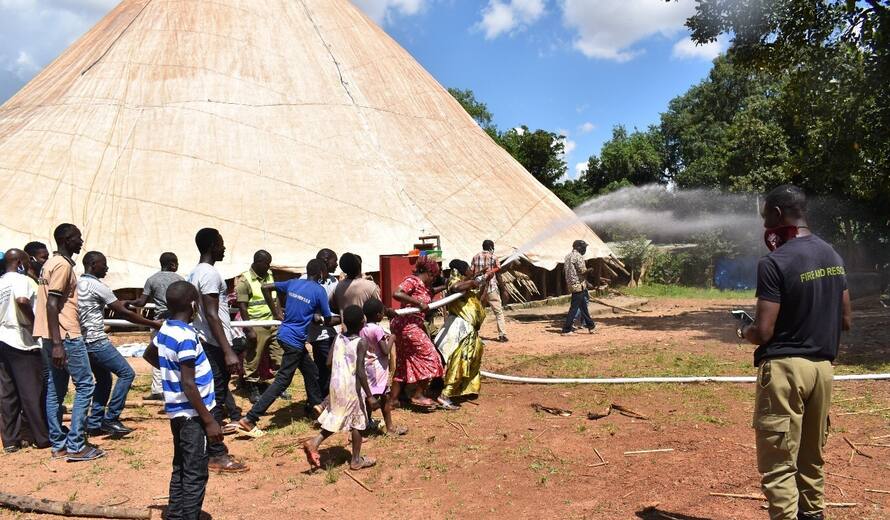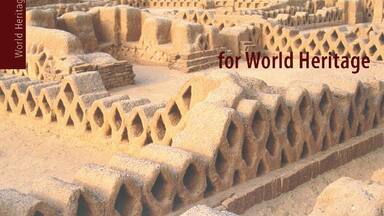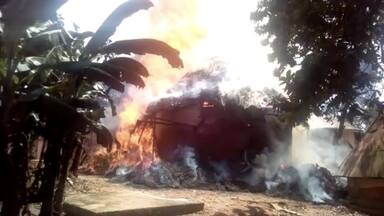Peer exchange strengthens Disaster Risk Management for World Heritage in East Africa
As part of an ongoing UNESCO Heritage Emergency Fund (HEF) project for “Post-fire emergency assistance for the World Heritage property of the Tombs of Buganda Kings at Kasubi, Uganda,” an online peer exchange was organized on 15 December 2021 by the UNESCO Regional Office for Eastern Africa between the site management authorities of the Kasubi Tombs World Heritage site in Uganda and the Sacred Mijikenda Kaya Forests World Heritage site in Kenya in order to exchange experiences managing recent fires and share lessons learned by Uganda in raising awareness and skills of local communities as well as developing a Disaster Risk Management Plan.
The Kasubi Tombs site has faced two destructive fires in 2010 and 2020. The 2010 fire led to the site being added to the UNESCO List of World Heritage in Danger. The Rabai Cultural Centre within the Sacred Mijikenda Kaya Forest World Heritage site was victim of arson in September 2021, destroying an important gathering place for local communities to share and celebrate intangible cultural heritage practices, and develop sustainable tourism.
Mr. Denis Lukwago, site manager of the Tombs of Buganda Kings at Kasubi World Heritage site in Uganda, participated in the online exchange with Mr. Anthony Githitho, Site Manager of Sacred Mijikenda Kaya Forests World Heritage property. They were joined by Mr. Remigious Kigongo, former site manager and special advisor to the Commissioner for Museums and Monuments on Kasubi Tombs, and Mr. Lawrence Chiro, Conservation Officer at the National Museums of Kenya working at the Sacred Mijikenda Kaya Forests.
Mr. Lukwago shared his experience organizing training courses for local communities living at the World Heritage property in Uganda. He highlighted the role of local police and fire departments in supporting regular “refresher courses” for local communities, and also evoked some of the challenges faced in ensuring close monitoring of risks at the site. As he recently completed the drafting of a Disaster Risk Management Plan for the World Heritage site in Danger, Mr. Lukwago advised his fellow site managers in Kenya on approaches for the preparation of a Disaster Risk Management Plan for the Sacred Kaya site. He placed special emphasis on the importance of preventive measures and the close involvement of local communities in successfully preparing for and managing disasters and risks. He also mentioned the importance of having the site plan be part of the national disaster risk management plan for the country.
In addition to the first-hand experience shared by Mr. Lukwago from his leading role in the Heritage Emergency Fund project for Kasubi Tombs, Ms. Karalyn Monteil, Programme Specialist for Culture at the UNESCO Regional Office for Eastern Africa shared information with the site managers on a UNESCO resource manual on Managing Disaster Risks for World Heritage. She also highlighted that the World Heritage Centre together with the International Centre for the Study of the Preservation and Restoration of Cultural Property (ICCROM), an Advisory Body to the World Heritage Committee, and the African World Heritage Fund (AWHF), a UNESCO Category II Centre based in South Africa, regularly organize training workshops to increase capacities of World Heritage site management authorities in managing disasters and risks, which the site management authorities in Kenya and Uganda can participate in. Lastly, she noted how another World Heritage site in Uganda—the Rwenzori Mountains National Park—has recently integrated climate change into their disaster risk management plan, which is a theme that Kenya may also wish to consider in the development of their plan for the Sacred Mijikenda Kaya Forests.
The site managers of the Sacred Kaya Forest shared their experience coping with the recent fire at the Rabai Cultural Centre within the Sacred Mijikenda Kaya Forest World Heritage site, for which they are preparing to develop a Disaster Risk Management Plan. Mr. Githitho pointed out that the fire was in one of ten kayas (sacred forest) comprising the World Heritage site, so the disaster risk management plan needs to be comprehensive covering the needs of all the kayas. He also highlighted the need to identify how intangible cultural heritage practices at the site were impacted by the fire and how to safeguard them in the recovery efforts. Mr. Chiro underscored the importance of starting the process with conflict and peace meetings among the local communities prior to launching the process for the disaster risk management plan, and any restoration plans for the cultural center.
The World Heritage Site Manager ‘Peer exchange on the development of disaster risk management plans for World Heritage Sites in Eastern Africa,’ organized through the UNESCO Heritage Emergency Fund project ‘Post-fire emergency assistance for the World Heritage property of the Tombs of Buganda Kings at Kasubi, Uganda’, helped our World Heritage site managers to better prepare for the development of a Disaster Risk Management Plan for the Sacred Mijikenda Kaya Forests World Heritage site in Kenya, which recently faced a destructive fire that destroyed the Rabai Cultural Centre within the World Heritage property.
Uganda was pleased to share our recent experience in the development of a Disaster Risk Management Plan for Kasubi Tombs, which was generously funded by the Heritage Emergency Fund, with our fellow World Heritage site managers in Kenya. We look forward to more peer exchanges with other World Heritage sites in Africa in order to ensure the protection and conservation of the Outstanding Universal Values of Uganda’s World Heritage sites.
This peer exchange is part of the Heritage Emergency Fund project at Kasubi Tombs, which is supporting procurement and installation of firefighting equipment for the Tombs of the Buganda Kings at Kasubi World Heritage property as well as training in firefighting and disaster risk management. The participating site managers have requested UNESCO to organize similar peer exchanges among World Heritage site managers in the Africa region in order to continue sharing experiences related to the conservation and management of World Heritage properties.
The donors to the Heritage Emergency Fund include the Qatar Fund for Development, the Kingdom of Norway, the French Republic, the Government of Canada, the Principality of Monaco, ANA Holdings INC., the Republic of Estonia, the Kingdom of the Netherlands, the Grand Duchy of Luxembourg, the Principality of Andorra, the Slovak Republic, and the Republic of Serbia.
Screen shot during the peer exchange on 15 December 2021 © UNESCO/Karalyn Monteil
For more information on the UNESCO Heritage Emergency Funds: https://en.unesco.org/themes/protecting-our-heritage-and-fostering-creativity/emergencyfund2




